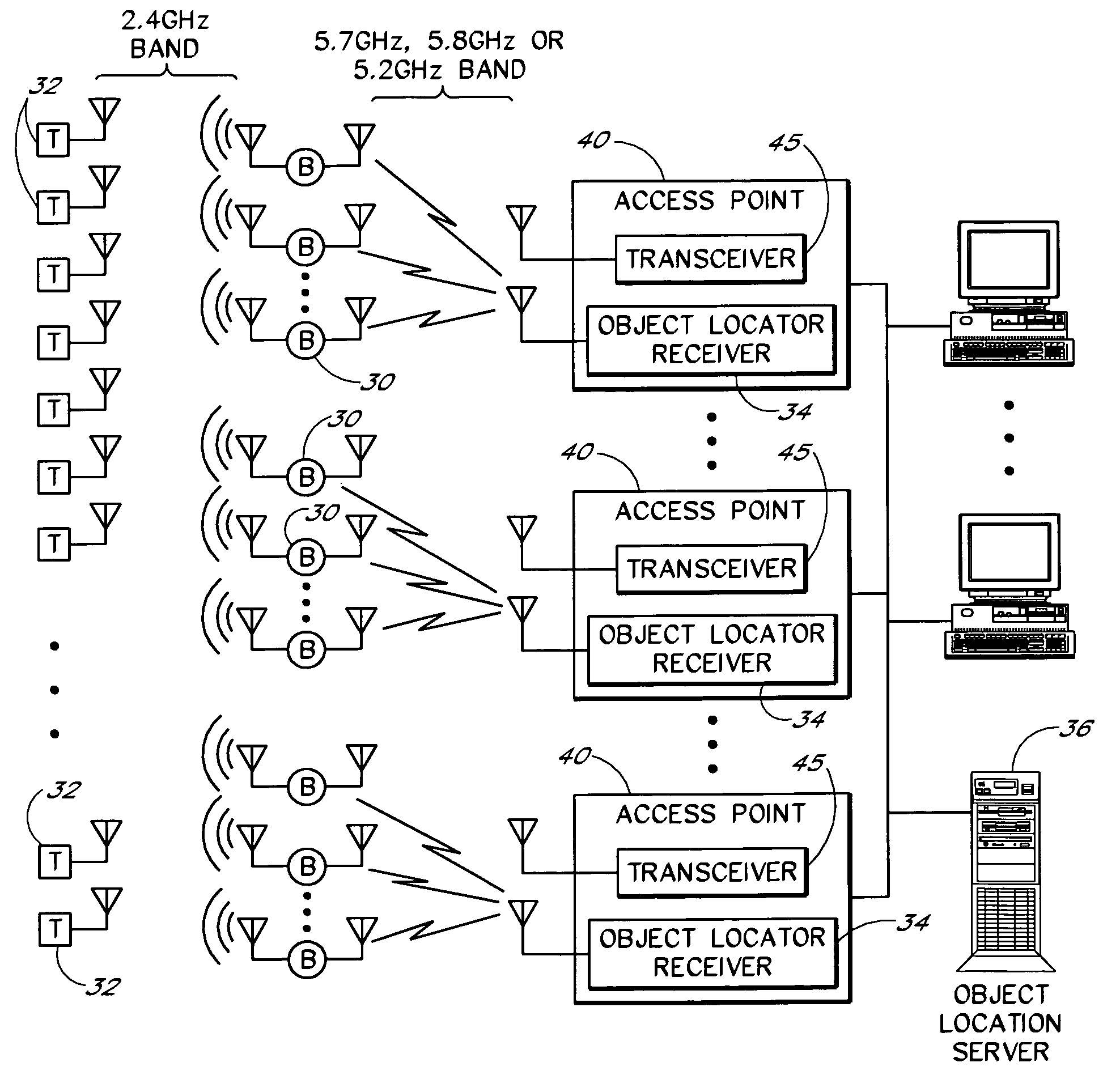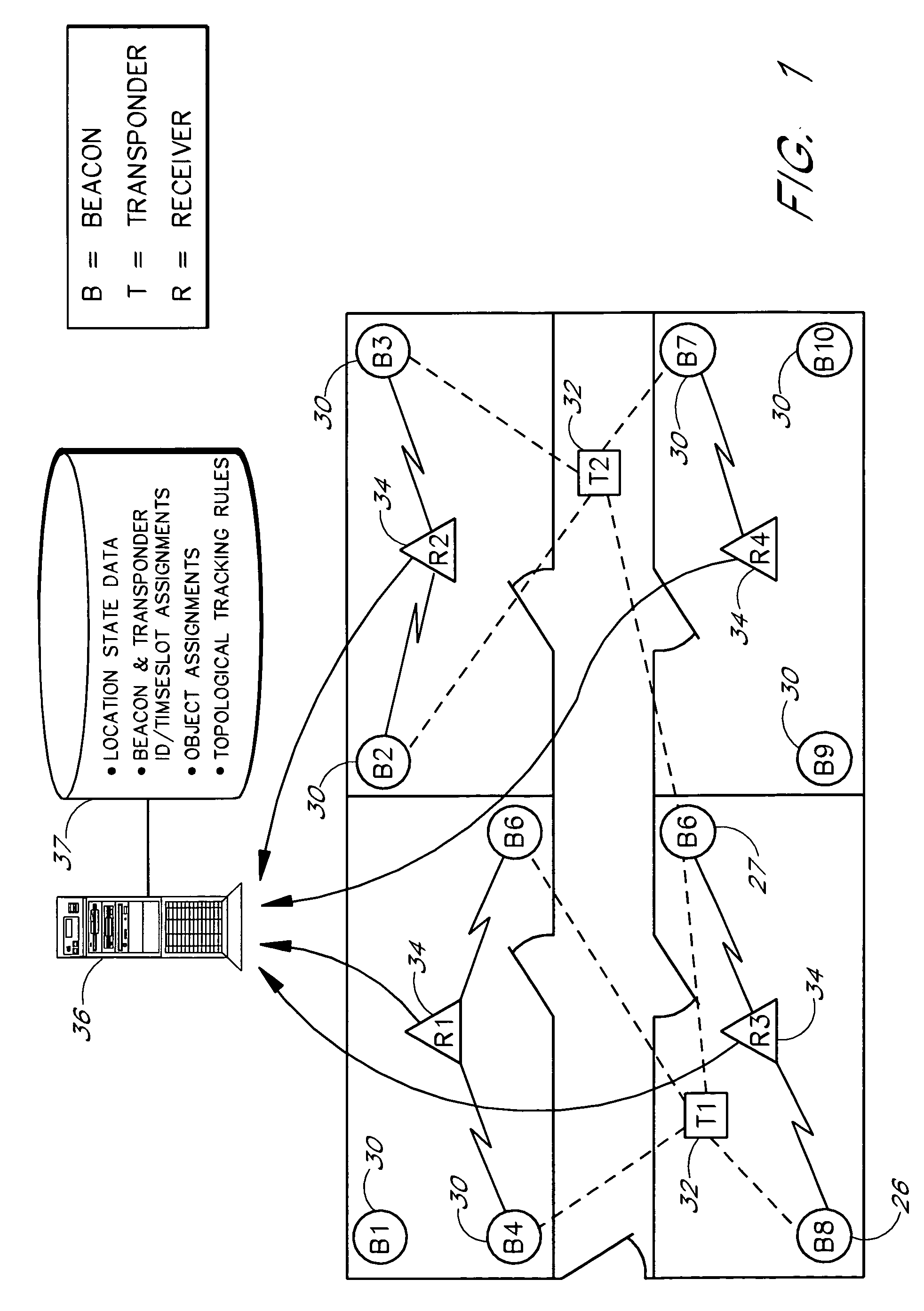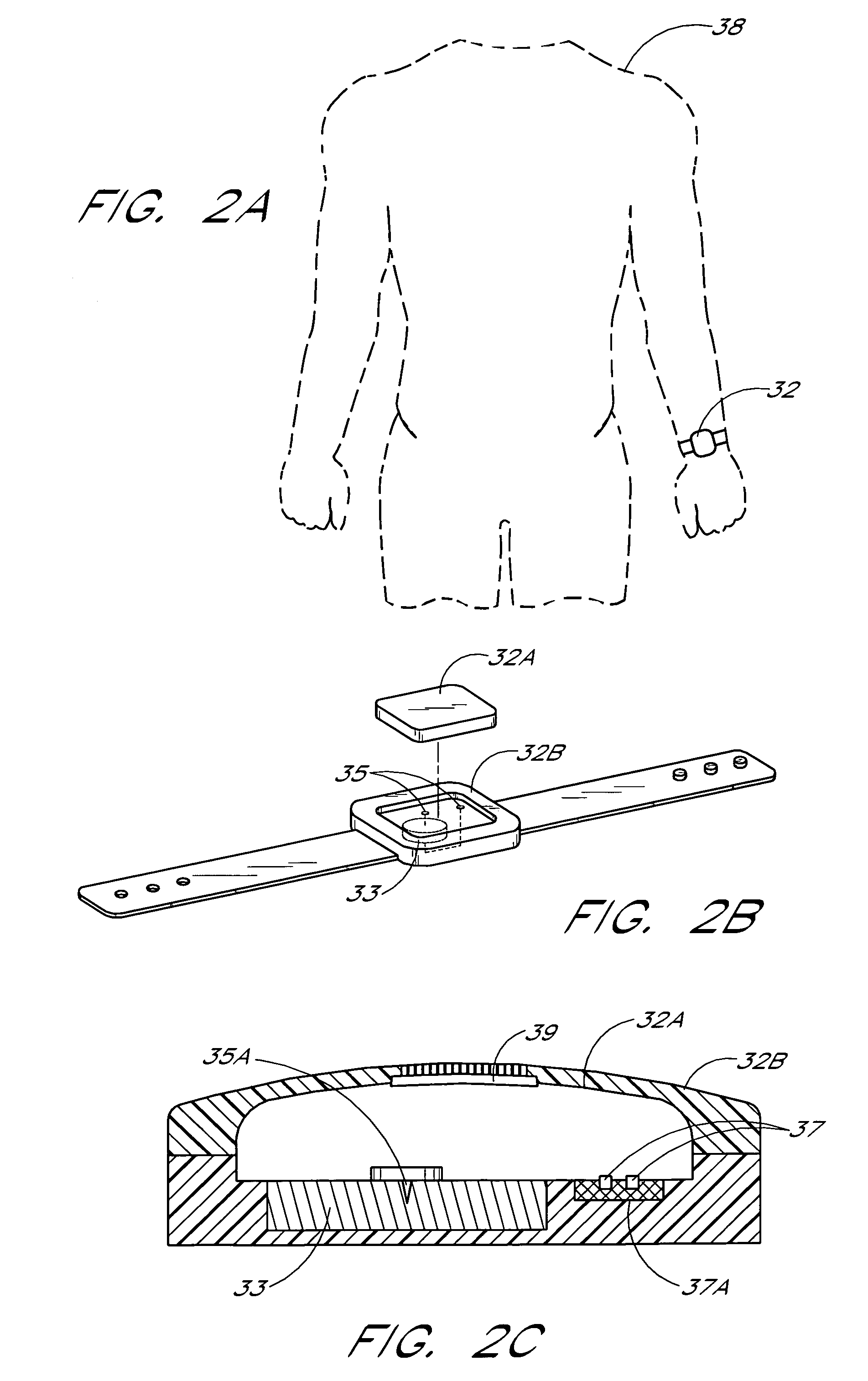Object location monitoring system
a technology for monitoring systems and objects, applied in the direction of direction finders using radio waves, testing/monitoring control systems, instruments, etc., can solve the problems of high degree of synchronization between the receivers, system is difficult and expensive to implement, and the location monitoring is not well suited for objects
- Summary
- Abstract
- Description
- Claims
- Application Information
AI Technical Summary
Benefits of technology
Problems solved by technology
Method used
Image
Examples
Embodiment Construction
[0027]The specific embodiments described below are intended to illustrate, and not limit, the invention. The scope of the invention is defined by the appended claims. For convenience, the description of the preferred embodiments is arranged within the following sections:[0028]I. Overview (FIGS. 1 and 2A)[0029]II. Disposable Bracelet Transponder Design (FIGS. 2B and 2C)[0030]III. Waveform and Timing Diagrams (FIGS. 3–6)[0031]IV. Integration of Receivers with Network Access Points (FIG. 7)[0032]V. Example Beacon Circuit (FIGS. 8 and 9)[0033]VI. Example Transponder Circuit (FIG. 10)[0034]VII. Example Receiver Circuit (FIG. 11)[0035]VIII. Determination of Transponder Locations (FIG. 12)[0036]IX. Ultrasonic Embodiments[0037]X. Dithering of Beacon Timeslots to Avoid Lockstep Interference[0038]XI. Use of Building Power Lines to Convey Beacon Retransmissions
I. Overview (FIGS. 1 and 2A)
[0039]FIG. 1 illustrates the basic components of a real time object location tracking system according to o...
PUM
 Login to View More
Login to View More Abstract
Description
Claims
Application Information
 Login to View More
Login to View More - R&D
- Intellectual Property
- Life Sciences
- Materials
- Tech Scout
- Unparalleled Data Quality
- Higher Quality Content
- 60% Fewer Hallucinations
Browse by: Latest US Patents, China's latest patents, Technical Efficacy Thesaurus, Application Domain, Technology Topic, Popular Technical Reports.
© 2025 PatSnap. All rights reserved.Legal|Privacy policy|Modern Slavery Act Transparency Statement|Sitemap|About US| Contact US: help@patsnap.com



